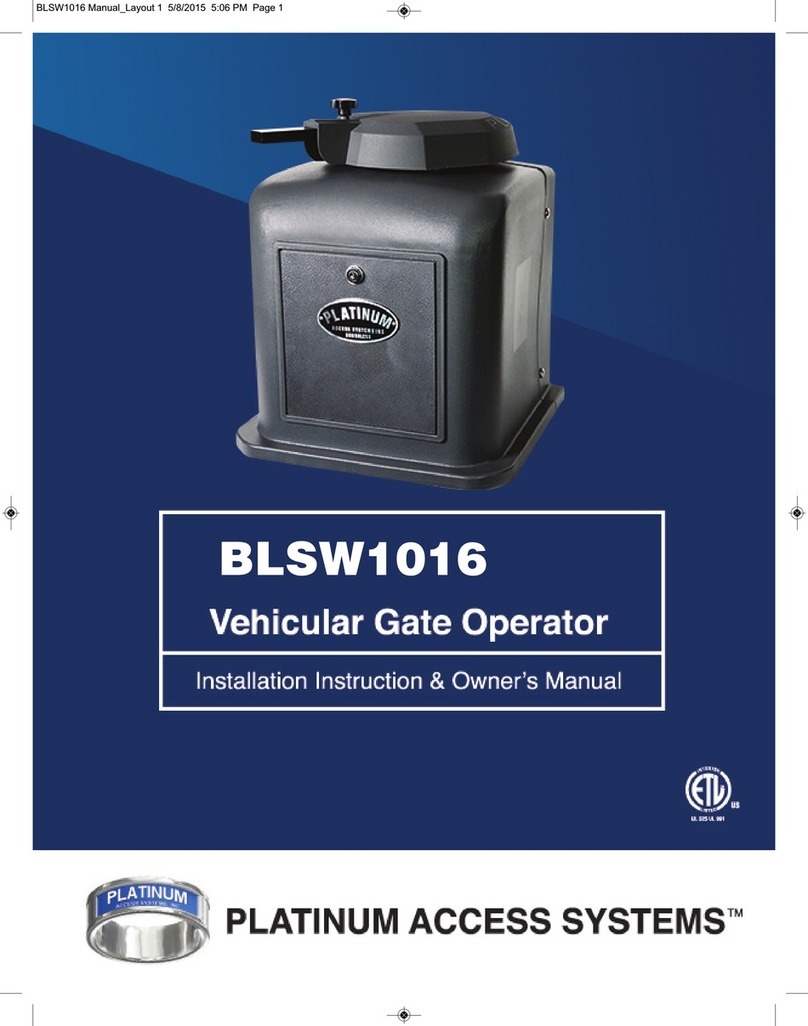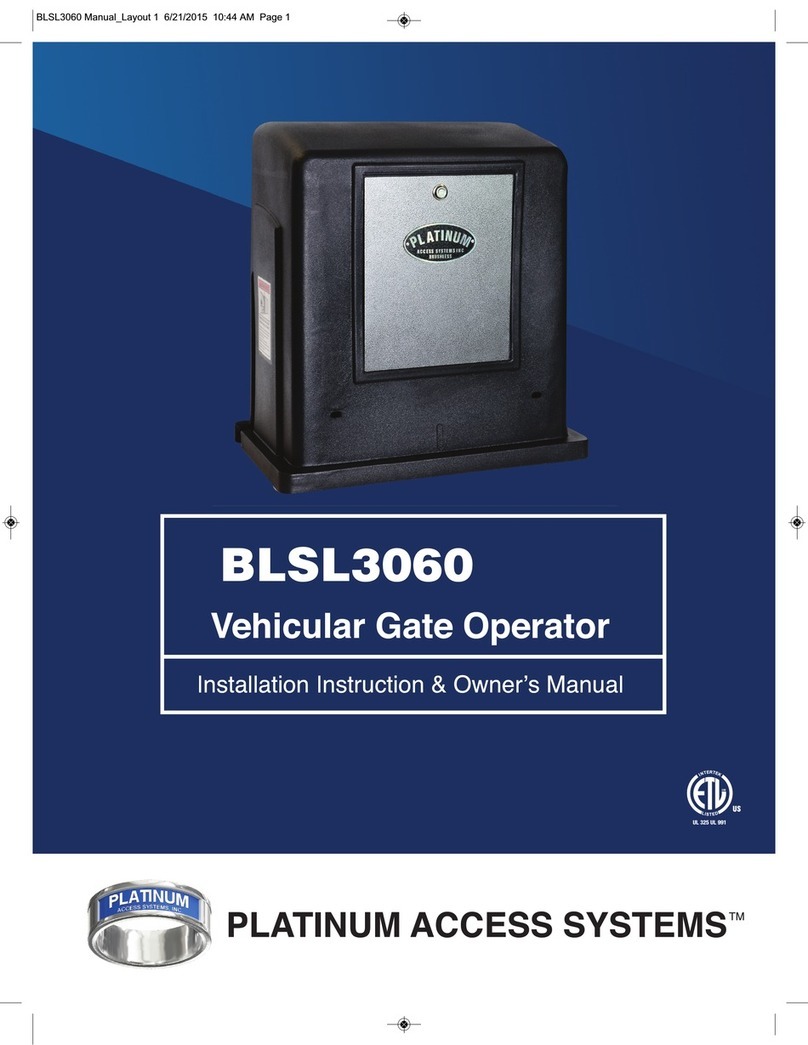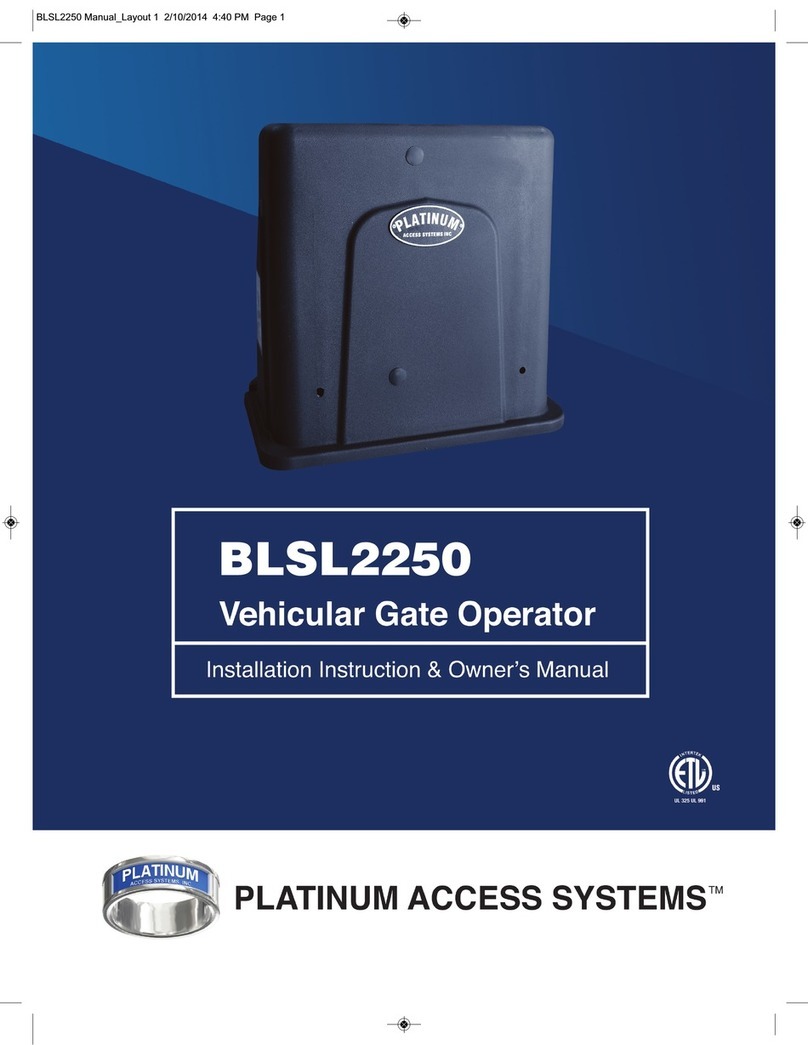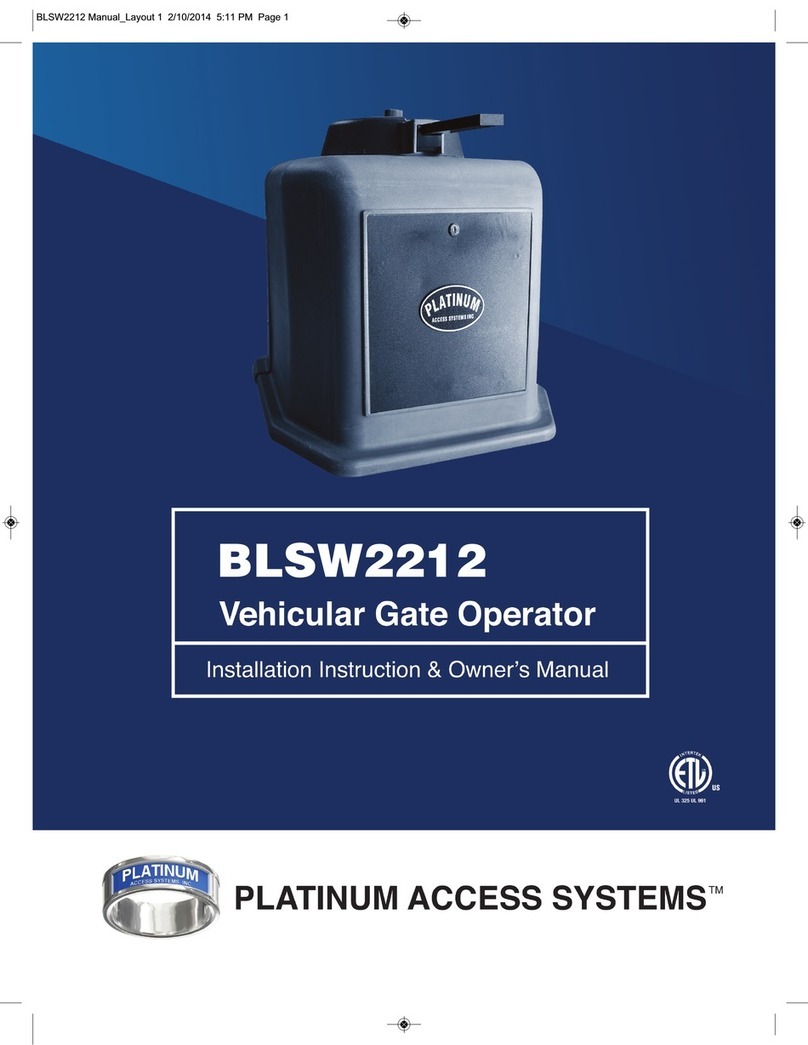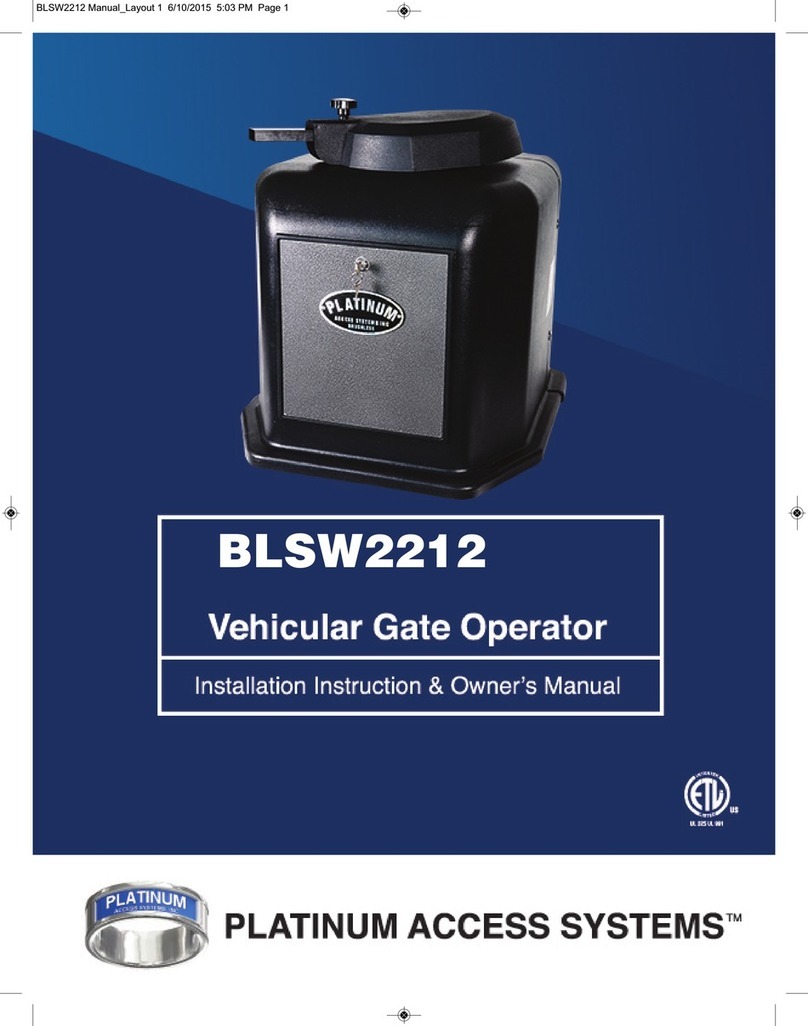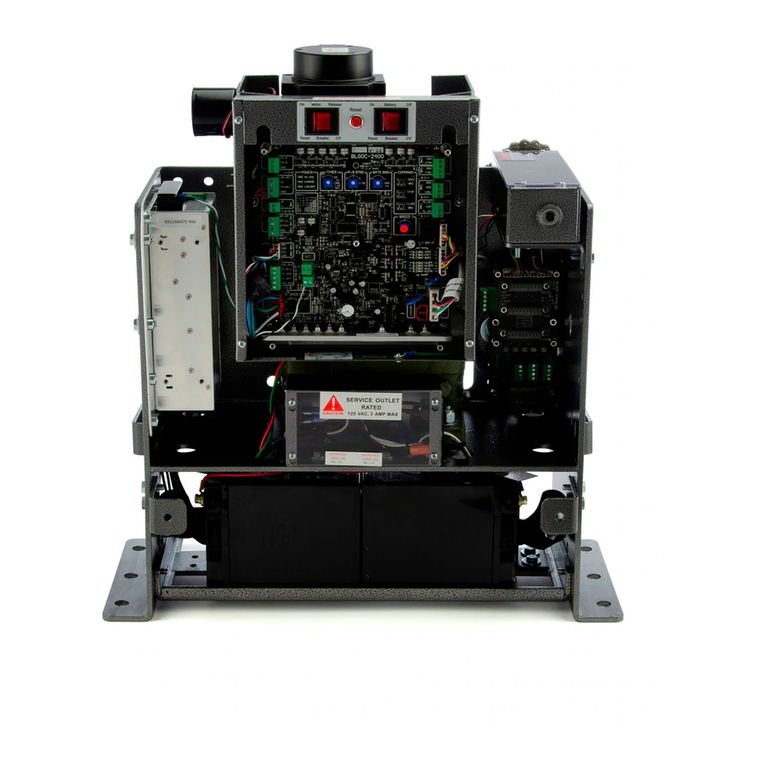
1
Installation Instructions & Safety Information Manual
UGP-712
Vehicular Swing Gate Operator
Class I, Class II, Class III, and Class IV
TABLE OF CONTENTS
Parts Diagram .............................................................................................................................................................................................2
Important Safety Instructions...............................................................................................................................................................3
Protection Against Entrapment ...........................................................................................................................................................4
Use and Application............................................................................................................................................................................. 5-6
Gate Operator Class Categories and Examples ..............................................................................................................................7
Mounting Instructions.............................................................................................................................................................................8
Manual Release Instructions .................................................................................................................................................................9
Mounting Instructions....................................................................................................................................................................10-15
Edge Sensor (Contact Sensor) Installation.....................................................................................................................................16
Important Safety Instructions.............................................................................................................................................................17
Maintenance Instructions ....................................................................................................................................................................18
Types of Installations..............................................................................................................................................................................19
Installation: Electronic Controller Mounting.................................................................................................................................20
Electrical Installation..............................................................................................................................................................................21
Installation: Primary/Secondary Connections ..............................................................................................................................22
Installation: Loop Rack ..........................................................................................................................................................................23
Installation: Selectable Features ................................................................................................................................................. 24-25
Installation: Selectable Features & Solar Installation..................................................................................................................26
Installation: Selectable Features ........................................................................................................................................................27
Installation: Accessory Connections..........................................................................................................................................28-31
Troubleshooting ......................................................................................................................................................................................32
